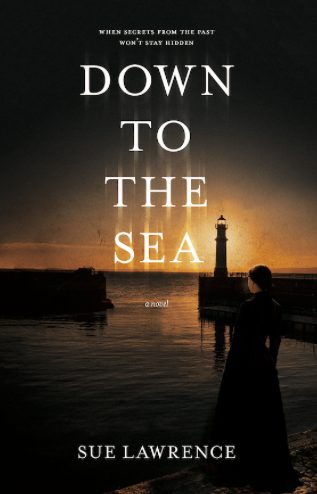Down to the Sea is the third novel by well-known cookery writer Sue Lawrence, and follows in the same genre and Scottish setting as her previous historical thrillers. Focusing on the fictional Wardie House in Newhaven, Edinburgh, the novel straddles two timelines: one in the 1980s as couple Rona and Craig buy the house to convert it into a nursing home; the other at the turn of the century when the building was a poorhouse, where seventeen-year-old Jessie has been sent to live. Inevitably, links become apparent between the two different timeframes and mysteries that Rona uncovers in the 1980s are generated from events in Jessie’s life in the late 1800s.
The central plotline is hooked onto Martha, a suspicious character living in the small lodge house adjacent to Rona’s care home. Martha tells conflicting stories about her past, becomes uncomfortably flirtatious with Craig, and inserts herself into Rona’s life almost against her will. Of course, as the narrative progresses, we begin to realise she is interested in more than just helping out with the nursing home residents. Martha is looking for something: a precious item lost decades ago. Events in the 1890s timeline gradually make clear the source of Martha’s hunt.
Down to the Sea works effectively as an eerie thriller. Its short chapters always provide new clues and pieces of evidence to be pieced together, and as the timelines begin to converge, the reader finds pleasure in joining up the answers like a dot-to-dot puzzle. There are also early moments that feel perfectly creepy and atmospheric: strange night-time noises, hidden underground tunnels, and a mysterious ancient pram in the cellar. The two central characters – Rona and Jessie – are believable, flawed and interesting and effectively engage the reader, creating a sense of pathos that encourages readers to root for them. Minor characters – Ian, Bertha, Effie, and the elderly residents – are also carefully drawn and help build a tapestry of convincing background roles. The setting is evocatively explored, particularly in the rustic and dank poorhouse of the earlier timeframe where elements of Jessie’s ‘cursed’ childhood could have been probed further.
In the novel’s final act, perhaps some of the details become a little convoluted in their telling – particularly in the revealing of Martha’s ‘true’ identity and how she came to find herself in Newhaven. Her relationship with Jessie also feels a little unbelievable. Nonetheless, Down to the Sea is a fast-paced and enjoyable read that will satisfy fans of the genre and help cement Lawrence as a skilled creator of historical mysteries.
